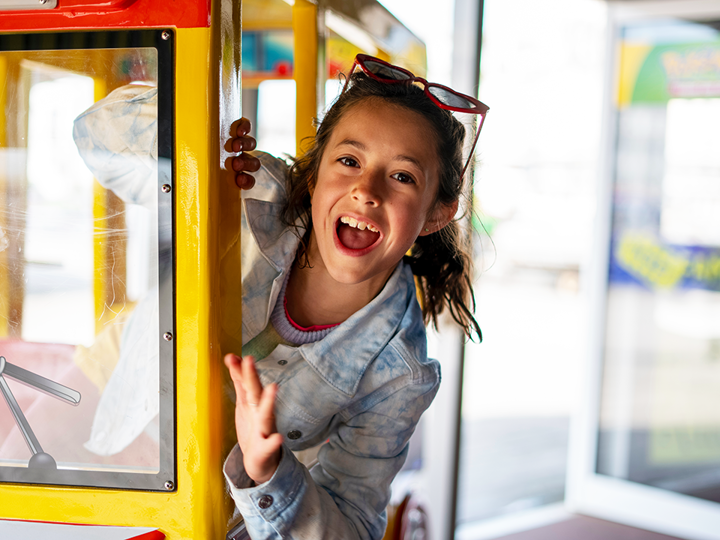ADHD (Attention Deficit Hyperactivity Disorder)
- SEND
- Behaviour, emotions and mental health
- Child development and growing up
- Neurodiversity

ADHD (attention deficit hyperactivity disorder) is a neurodevelopmental condition. It can also be known as ADD (attention deficit disorder). The symptoms can be split into 3 categories, difficulties with attention, hyperactivity and impulsivity.
ADHD is a form of neurodiversity. This means that children and young people with ADHD think and work differently as their brains work slightly differently. ADHD does not affect intelligence. It cannot be 'cured' and it cannot be 'outgrown'. Children and young people with ADHD will grow up into adults with ADHD.
Types of ADHD
There are 3 types of ADHD.
Inattentive - This can look like your child being easily distracted, forgetful, having difficulties focusing on tasks or spacing out.
Hyperactive or impulsive - This can look like being fidgety, very energetic, impulsive, overly talkative or having racing thoughts.
Combined - This is the most common type of ADHD. It's a combination of the inattentive and hyperactive types.
ADHD traits
ADHD has a wide range of characteristics and traits. There isn't a specific way that ADHD 'should' look. ADHD can look very different in each child. Every child is unique, so their ADHD traits are going to be unique too.
The ADHD traits can be spotted at an early age. It's not usually possible to diagnose children with ADHD until they are 6 years old. This is because the traits associated with ADHD are part of the typical development of children between 2 to 5 years old. For example, we expect children under 5 to find it hard to sit still for long periods of time. ADHD traits often become more noticeable when children start school.
There are differences in how boys and girls show their ADHD traits. For example, boys are more likely to show their hyperactivity by running around or being disruptive. In girls, hyperactivity can look like talking a lot, doodling or fidgeting in their chair.
Impulsive
- Finds it hard to wait for their turn
- Interrupting people when they speak
- Answers before a question is completed
- Acts without thinking like jumping off playground equipment without thinking how or where they'll land
- Expresses frustration by punching or screaming
Inattentive
- Careless or silly mistakes in school work or activities
- Short attention span
- Does not appear to be listening
- Struggles with organising
- Avoids tasks that require lots of attention for a long time
- Easily distracted
- Loses things like toys, clothes, keys or homework
- Forgetful
- Does not notice when they need to eat, drink, sleep or go to the toilet
Hyperactivity
- Fidgets a lot
- Struggles to stay in their seat
- Moves around a lot- like being powered by a motor
- Loud
- Doodles a lot
- Talks a lot
- Focuses on a specific topic or activity without noticing
ADHD strengths and 'superpowers'

It can be easy to focus on what your child or young person is struggling with. People with ADHD have lots of different strengths that they can offer. It's really important to highlight your child or young person's strengths to them.
People with ADHD can be:
- adaptable
- creative
- curious
- energetic
- enthusiastic
- empathetic
- flexible
- funny
- good under pressure
- good at lots of different skills (a jack of all trades)
- good at making connections
- good at seeing and understanding emotions (emotionally intelligent)
- good at spotting patterns
- good at understanding things instinctively (intuitive)
- open to new experiences
- original
- passionate
- persistent
- quick learning
- resourceful
- resilient
- spontaneous
These are only some of the strengths your child or young person may have. Your child or young person's strengths will be as unique as they are.
Helping your child or young person with ADHD
It can be difficult to know where to start to help your child or young person with their ADHD. ADHD cannot be 'cured', but you can help your child or young person to manage their symptoms.
ADHD cannot be managed just using medication. Managing ADHD symptoms needs a combination of different elements, including:
- learning and understanding ADHD (also known as psychoeducation)
- a whole person approach
- medication
- therapy
- behavioural strategies
Parenting a child or young person with ADHD
Children and young people with ADHD may need a slightly different approach to parenting. This is because their brains literally work in a different way.
Many parenting methods on behaviour require children to:
- listen
- organise and plan ahead
- remember things
- think before they act
- be motivated by rewards
Children and young people with ADHD can have difficulties in some, if not all of these areas. It can make it really hard for them to follow instructions. This leads to frustration for both you and your child or young person.
Some small changes can make a big difference when parenting children and young people with ADHD.
Common conditions for children and young people with ADHD
This is not because they are being difficult or lazy. It's because their brains work differently from a chemical imbalance. These conditions are common in neurodivergent children and young people.
Waiting for a diagnosis
We understand that waiting for an ADHD diagnosis is frustrating. We have created a list of books, resources and local organisations that can help whilst you wait.
Last reviewed: 27 November, 2024











